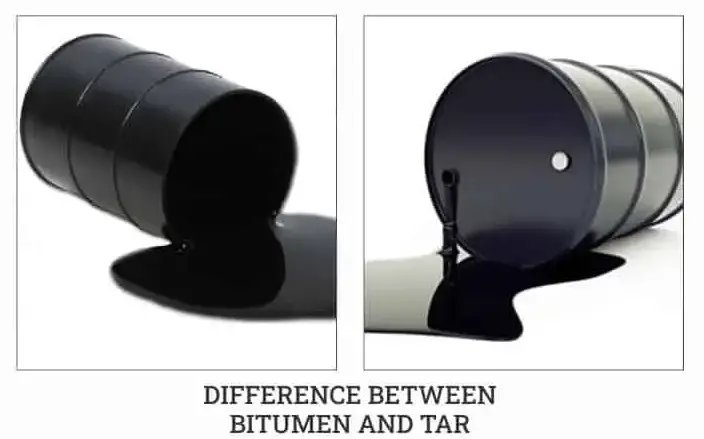Coal tar and bitumen are two substances that, while often mentioned in similar industrial contexts, have distinct properties and applications that set them apart. Both materials are derived from the distillation of different types of carbon-based compounds and are essential in various sectors, notably in construction and manufacturing. Despite their common usage in similar arenas, the characteristics and benefits of each differ significantly.
Coal tar is a byproduct obtained from the coal coking process used to produce coke from coal, whereas bitumen, commonly referred to as asphalt, is a more viscous derivative of the distillation process of crude oil. Coal tar is renowned for its high phenolic compounds content, making it a preferred material in medicinal and industrial applications. Bitumen, on the other hand, is predominantly used for paving roads and as a sealant and waterproofing agent due to its excellent adhesive properties and weather resistance.
The environmental impact and sustainability of both materials are subjects of increasing scrutiny. Coal tar’s production and use are tightly regulated due to its carcinogenic properties and environmental concerns. Bitumen, while slightly more eco-friendly, still poses challenges regarding emissions during production and its effects on ecosystems. Innovations and advancements in production methods continue to improve the safety and environmental footprint of these crucial materials.

Composition and Production
What is Coal Tar?
Coal tar is a thick, dark liquid that is a byproduct of the coking process of coal to produce coke, used in steel manufacturing. This substance, rich in polycyclic aromatic hydrocarbons (PAHs), has several chemical properties that make it uniquely valuable, particularly in industrial and medical fields.
Production Process
- Coking: Coal tar is produced during the high-temperature coking of coal in the absence of air. This process involves heating coal in coke ovens to temperatures up to 1,100 degrees Celsius, which decomposes the coal into coke and various byproducts, one of which is coal tar.
- Separation: Following coking, coal tar is collected and distilled to separate its various components, which are used in different products, ranging from pharmaceuticals to industrial sealants.
Chemical Properties
- Composition: Coal tar is primarily made up of a complex mixture of four main classes of organic compounds: aromatic hydrocarbons, heterocyclic compounds, phenols, and polycyclic aromatic hydrocarbons.
- Reactivity: Due to its high PAH content, coal tar is chemically reactive, especially when exposed to ultraviolet light, which can lead to the formation of new compounds.
What is Bitumen?
Bitumen, often known as asphalt, is a viscous liquid or semi-solid form of petroleum. This black or dark-colored substance holds together the rocks and aggregates in roads and roofing materials due to its excellent adhesive and waterproofing properties.
Sources and Extraction
- Distillation of Crude Oil: Bitumen is primarily produced through the fractional distillation of crude oil. This involves heating crude oil in a refinery tower to separate different components based on their boiling points.
- Natural Deposits: Some bitumen is also mined from natural tar sands where petroleum has degraded into bitumen naturally.
Composition Details
- Hydrocarbons: Bitumen consists mainly of complex hydrocarbons, including saturated compounds, aromatic hydrocarbons, and heterocyclic compounds.
- Sulfur and Trace Metals: It also contains small amounts of sulfur and trace metals, which can influence its physical properties and suitability for certain applications.
Physical Properties
Coal Tar Characteristics
Viscosity and Density
- High Viscosity: Coal tar has a much higher viscosity than water, making it thick and sticky, which is useful for coating and sealing applications.
- Density: It is denser than water, which allows it to form a protective barrier that is impervious to water and air.
Thermal Stability
- Heat Resistance: Coal tar can withstand relatively high temperatures before decomposing, making it suitable for high-temperature industrial processes.
Bitumen Characteristics
Color and Adhesive Properties
- Black Color: The dark color of bitumen is due to the dense organic materials it contains, which also provide strong sunlight absorption properties.
- Strong Adhesion: Bitumen’s adhesive qualities make it ideal for road construction, roofing, and other applications requiring durable bonding.
Temperature Response
- Softening Point: Bitumen softens when heated and becomes more fluid, which is critical for its application in road surfacing.
- Thermal Expansion: It also exhibits thermal expansion and contraction in response to temperature changes, which must be managed to prevent cracking.
Uses and Applications
Applications of Coal Tar
Industrial Uses
- Protective Coatings: Used in protective coatings to prevent corrosion on surfaces such as ships, bridges, and rail equipment.
- Production of Chemicals: Serves as a precursor for the manufacture of various chemicals including synthetic dyes, pharmaceuticals, and agrochemicals.
Medicinal Roles
- Skin Treatments: Coal tar is an active ingredient in treatments for skin conditions such as psoriasis and eczema, where it helps reduce scaling, itching, and inflammation.
Applications of Bitumen
Road Construction
- Asphalt Concrete: Bitumen is used as a binder in asphalt for roads, where it holds the aggregate particles together and provides a durable surface that withstands environmental wear and tear.
Waterproofing
- Roofs and Foundations: Applied in liquid form to seal roofs and foundations, bitumen creates a waterproof barrier that protects buildings from moisture ingress.

Environmental Impact
Coal Tar Effects
Environmental Risks
- Pollutants: Coal tar releases high levels of polycyclic aromatic hydrocarbons (PAHs), known pollutants that can contaminate air, water, and soil.
- Water Contamination: When coal tar is improperly disposed of or when products containing coal tar degrade, PAHs can leach into groundwater, affecting aquatic life and potentially entering drinking water supplies.
Health Implications
- Carcinogenic Properties: Exposure to coal tar can lead to serious health issues, including cancer, particularly skin and lung cancer due to its high PAH content.
- Skin Conditions: Handling coal tar without proper safety gear can cause dermatitis, photosensitivity, and other skin conditions.
Bitumen Sustainability
Emissions during Production
- Greenhouse Gases: The production of bitumen involves significant release of carbon dioxide and other greenhouse gases, contributing to climate change.
- Energy Consumption: High energy requirements for extracting and processing bitumen also contribute to its environmental footprint.
Longevity and Recycling Options
- Reusability: Bitumen can be recycled and reused in new paving projects, reducing the need for raw materials and minimizing waste.
- Long Service Life: Properly installed bitumen applications can last for decades, decreasing the frequency of replacement and the associated environmental impact.
Advantages and Limitations
Benefits of Coal Tar
Cost-effectiveness
- Affordable: Coal tar remains an economically viable option for many industrial applications due to its low cost of production.
- Resource Utilization: Utilizing coal tar, a byproduct of steel production, maximizes resource efficiency and reduces waste.
Specific Industrial Applications
- Coatings and Sealants: Its effectiveness in protecting and preserving materials makes coal tar ideal for use in sealants and protective coatings in heavy industries.
Benefits of Bitumen
Durability and Resilience
- Weather Resistance: Bitumen’s ability to withstand extreme weather conditions makes it suitable for outdoor applications, particularly in road construction.
- Load Bearing: It supports heavy loads, making it ideal for high-traffic areas.
Versatility in Uses
- Multiple Applications: From roads to roofs, bitumen’s adhesive properties and waterproof nature make it highly versatile across various construction needs.
Limitations Comparison
Handling and Safety Issues
- Toxicity: Both coal tar and bitumen emit fumes that can be toxic if inhaled, requiring careful handling and proper safety equipment.
- Heat Sensitivity: High temperatures can make bitumen fumes more intense and coal tar more fluid, which may pose additional risks during application.
Environmental Considerations
- Leachates: Both materials can produce leachates that may harm the environment if not properly managed.
- Sustainability Concerns: The environmental impact of extracting and processing these materials is significant, prompting the need for better practices and regulations.
Technological Advancements
Innovations in Coal Tar Use
New Industrial Applications
- Advanced Materials: Research is ongoing into using modified coal tar components in high-performance materials like carbon fibers and advanced ceramics.
- Energy Storage: Coal tar derivatives are being explored as potential materials for energy storage systems, such as batteries.
Enhanced Processing Techniques
- Cleaner Production: Technologies that reduce the environmental impact of coal tar production, like lower temperature pyrolysis, are being developed to minimize emissions.
Innovations in Bitumen Use
Modified Bitumen Products
- Rubber Infusion: Adding crumb rubber from recycled tires enhances bitumen’s elasticity and durability.
- Polymer-modified Bitumen: These products offer improved performance for specific applications like high-stress or extreme temperature environments.
Eco-friendly Alternatives
- Bio-bitumen: Researchers are developing bitumen-like materials from renewable sources, such as lignin from wood processing, aiming to reduce dependence on petroleum.
Market Trends
Global Demand for Coal Tar
Industry Driving Demand
- Aluminum and Steel Industries: These sectors are major consumers of coal tar for carbon products and coatings, driving global demand.
- Pharmaceuticals: The use of coal tar in medicinal products continues to contribute to its steady market presence.
Geographic Market Insights
- Asia-Pacific Dominance: China and India lead in coal tar production and consumption due to their expansive industrial bases.
Bitumen Market Dynamics
Consumption Patterns
- Growing Infrastructure Needs: Global urbanization and infrastructure development are primary drivers of bitumen demand, especially in emerging economies.
Future Market Predictions
- Innovative Applications: Continued research into new uses and improved forms of bitumen is expected to expand its market.
- Regulatory Impacts: Environmental regulations may shift how bitumen is produced and used, potentially leading to increased use of eco-friendly alternatives.
Frequently Asked Questions
What is Coal Tar Used For?
Coal tar has a variety of applications, particularly in the medical field and industrial processes. It is used in the production of medications for skin diseases like psoriasis and dandruff due to its antiseptic and anti-inflammatory properties. In industry, coal tar serves as a base for coatings, preservatives, and within the synthetic dye manufacturing.
How is Bitumen Produced?
Bitumen is produced through the distillation of crude oil. The process involves the extraction of heavier hydrocarbons from crude oil in a refinery, followed by further treatment to achieve the desired viscosity and adhesive properties. This material is then utilized primarily in construction, notably for road surfaces and roofing.
What are the Environmental Impacts of Bitumen?
Bitumen’s environmental impacts include significant greenhouse gas emissions during its production and application phases. Additionally, concerns regarding its contribution to urban heat islands and leaching of chemicals into the environment are notable. Efforts to develop eco-friendlier versions of bitumen include incorporating recycled materials and enhancing the energy efficiency of its production processes.
Can Coal Tar be Recycled?
Recycling coal tar is complex due to its chemical composition and potential health hazards. However, research into repurposing coal tar into useful chemicals or incorporating it into composite materials is ongoing, aiming to reduce its environmental footprint and enhance its economic value.
Conclusion
The significance of coal tar and bitumen extends across various industries, each playing a pivotal role in modern infrastructure and technology. While both substances share common uses, their distinct properties necessitate careful consideration regarding their applications and environmental impacts. As industries continue to evolve, so too will the technologies and methods used to produce and implement these materials, ideally leading to safer and more sustainable practices.
The future of coal tar and bitumen usage is likely to hinge on advances in environmental technology and increased regulatory scrutiny. Balancing industrial needs with ecological responsibility will remain a key challenge, as will the exploration of new applications and improvements in recycling and waste management techniques. This ongoing development will shape the trajectory of both materials in the years to come.

